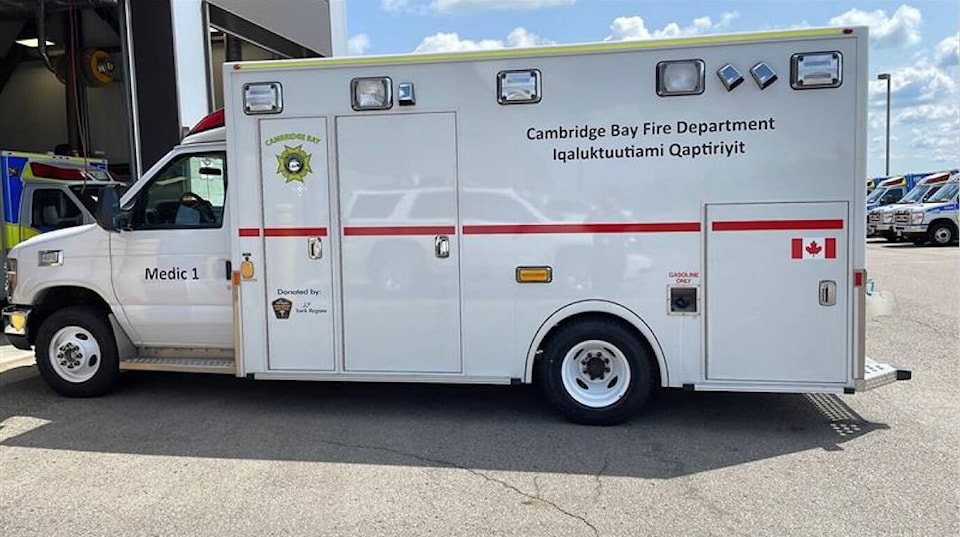Two Nunavut communities are set to receive refurbished ambulances from municipalities in southern Ontario.
The vehicles are expected to arrive on the coming sealifts.
Cambridge Bay will be getting an ambulance from York, Ont. Kugaaruk, meanwhile, will receive one from Guelph, Ont.
“We’ve been hoping for something like this for a good many years now,” said Cambridge Bay Fire Chief Keith Morrison, whose department will be in charge of the ambulance.
For many years, Cambridge Bay has been using a cube van for emergency medical transport, generally between the health centre and the medevac pad.
The van was formerly used by the local fire department, so it’s not just an “empty box,” according to Morrison. However, the height of the vehicle makes it difficult for passengers to enter and exit, particularly for people with mobility issues, and when staff are moving patients on stretchers.
“It’s not optimal,” Morrison said. “ It’s a bit of work to get people in, occasionally. And while it is outfitted, it is fairly bare bones.
“It’s not an ambulance.”
Cambridge Bay and Kugaaruk will be receiving their ambulances through an independent program created by John Prno, a retired fire chief from Waterloo, Ont.
The program facilitates the transfer of decommissioned ambulances from Ontario to communities in Nunavut.
Generally speaking, ambulances in Ontario are only used for five years before they are retired. According to Prno, many of them only have about 250,000 kilometres on the odometer by that point.
“They’ve got a lot of life in them, and in Nunavut communities, they’re not going to put on 50,000 kilometres a year,” he said. “They’ll be lucky if they put on 500.”
Before the ambulances begin their journey from Ontario to Nunavut, they are cleaned, refurbished, given mechanical checks and new tires, if necessary. Cambridge Bay’s ambulance even received new lettering to reflect its new home.
“It’s like Cambridge Bay is getting a brand new ambulance,” said Prno.
The preparation of each ambulance is handled by the municipality of origin. The emergency vehicles are then driven from Ontario to Bécancour, Que., by volunteers from St. John Ambulance – a drive taking approximately eight hours. They are then transported to Nunavut on cargo ships. The recipient community is responsible for the cost of shipping.
The municipalities that donate their used ambulances could sell them instead, for close to $20,000, Prno estimates. However, local staff get satisfaction from knowing the vehicles will continue to be used to help people.
“The chiefs that I’ve worked with over the years have really grabbed onto the fact that we’re giving a second life to this ambulance instead of letting it become a plumber’s truck or a French fry truck,” said Prno. “It’s getting another chance to do what it does best, and what it was designed for.”
His program has been operating since roughly 2015, when he was still working as a fire chief in Waterloo. At the time, he had facilitated the donation of several Ontario ambulances to communities in Africa and Central America, but his son, who worked as a consultant in Nunavut, suggested he look north.
The first ambulance sent to Nunavut landed in Iglulik, with the help of the community’s senior administrative officer, Greg Morash. Fourteen other communities expressed interest in receiving ambulances at that time, and 12 of those are now in receipt. The most recent to inherit one was Baker Lake.
Prno also aims to “come up with a program that trains medical first responders in the North.”
“We were well underway with that, and then Covid hit,” he said. “We’ve got to get that started again.”
